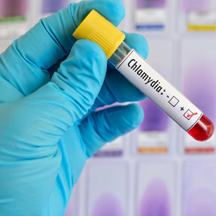The latest Centers for Disease Control and Prevention (CDC) Sexually Transmitted Disease (STD) Surveillance Report shows that STD rates increased for the fourth consecutive year in 2017, and there has been a steep, sustained increase in the incidence of all three reportable STDs. While these STDs are treatable, if untreated, they can cause serious health consequences such as pelvic inflammatory disease, infertility, and stillbirth.
Firstly, gonorrhea diagnoses increased by almost 70% percent overall and nearly doubled among men. Increases in diagnoses among women, and the speed with which they are increasing, are also concerning, with cases going up for the third year in a row.
Primary and secondary syphilis diagnoses increased 76%. Congenital syphilis (transmitted from the pregnant person to the fetus) cases rose sharply with 918 cases in 2017, a number that has more than doubled since 2013. This included 64 reported stillbirths as a result of congenital syphilis (up from 41 in 2016).
Lastly, chlamydia remained the most common condition reported to CDC. More than 1.7 million cases were diagnosed in 2017, with 45% of cases among 15- to 24-year-old females. The preliminary data for 2018 sadly shows these trends continuing and a new CDC analysis suggests that gay and bisexual men are at a higher risk for extragenital STDs (e.g. chlamydia or gonorrhea in the throat or rectum), which increases treatment difficulty, drug resistance, and the risk of HIV infection.
STD Rates Rise, While Heath Departments Face Budget Cuts
Health


While STD rates are quickly increasing, federal, state, and local resources have stayed the same or decreased, leaving public health systems strained, including local health departments. In 2017, National Association of County and City Health Officials (NACCHO) queried its HIV, STI, and Viral Hepatitis Sentinel Network and found that nearly one-third of local health departments anticipate budget cuts in the next fiscal year and the majority experiencing stagnant funding for STD programs at best.
NACCHO Chief Executive Officer Lori Tremmel Freeman added, “But as NACCHO’s research shows, they need more support, stagnant or decreasing resources are not enough, and local health departments and their partners need more resources to address these rapidly rising STD rates.”
NACCHO Chief Executive Officer Lori Tremmel Freeman added, “But as NACCHO’s research shows, they need more support, stagnant or decreasing resources are not enough, and local health departments and their partners need more resources to address these rapidly rising STD rates.”
Advertisers | Contact Us | Events | Links | Media Kit | Our Company | Payments Pier
Press Room | Print Cover Stories Archives | Electronic Issues and Talk Radio Archives | Writer's Guidelines






